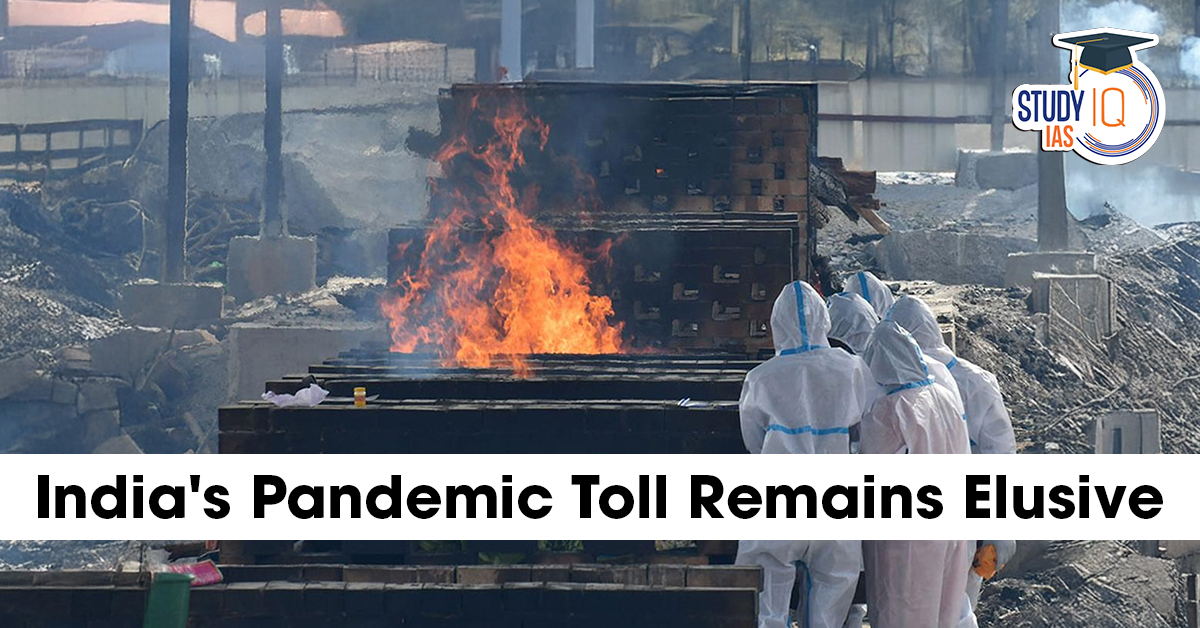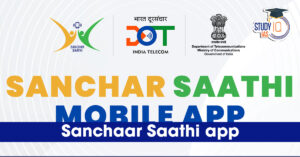Table of Contents
Context: India’s official COVID-19 death toll likely underestimates the true mortality impact due to under-registration, poor death certification, and failure to capture indirect pandemic-related deaths.
What is the Civil Registration System (CRS)?
Civil Registration System (CRS) is a continuous, permanent, and compulsory recording of births and deaths in India under the Registration of Births and Deaths Act, 1969.
Key Features
- Legally Mandated: Operates under the Registration of Births and Deaths Act, 1969.
- Every birth and death must be registered within 21 days.
- Decentralised Operation: Managed at the state and local level (e.g., by registrars at municipal offices or Panchayats).
- Annual Reporting: Publishes annual data on registered births and deaths.
- Recent data (e.g., for 2021) showed a sharp rise in mortality.
- Linked to Health & Demographic Systems: Integrated with the Sample Registration System (SRS) and the Medical Certification of Cause of Death (MCCD) in policy analysis.
Systemic Gaps in Mortality Data and Surveillance
- Incomplete Registration: 29% of deaths (2016–20) were unregistered (NFHS-5).
- COVID lockdowns further delayed or disrupted registration services.
- Low Medical Certification: In 2021, only 4% of registered deaths had a medically certified cause.
- In many cases, deaths occurred without medical attention (45% in 2020).
- Leads to misclassification or non-identification of COVID-19 deaths.
- Under-ascertainment of COVID Deaths: Discrepancy between official COVID toll (5.33 lakh) and excess deaths (1.02 crore in 2021).
- WHO estimates 47 lakh pandemic deaths — India disputed this, citing methodology issues.
- Indirect Deaths Not Counted: Deaths from delayed treatment, mental health impacts, poverty, and healthcare access issues are not included in official statistics.
- In Kerala, 34% of deaths were indirectly pandemic-related.
- Disparities Between States: Kerala, with a better health system, still had gaps (e.g., only 61% of deaths registered within time in 2021).
- States like Gujarat, MP show greater discrepancies between CRS data and official COVID tolls.
Implications of These Gaps
- Inaccurate Pandemic Assessment: Undermines India’s ability to truthfully assess COVID’s human toll.
- Weak Public Health Response: Poor surveillance hampers planning for future epidemics or disasters.
- Social and Policy Injustice: Families of unrecorded COVID victims may miss out on government compensation or welfare.
- Loss of Trust and Accountability: Disparity in data erodes public trust in institutions.
- Global Credibility at Stake: Disputing WHO figures without transparent domestic data undermines India’s data credibility on global platforms.
Way Forward
- Reform the CRS and MCCD systems to improve completeness and accuracy.
- Digitise and integrate death records with health databases.
- Make medical certification mandatory, especially for hospital deaths.
- Train officials and health workers in accurate death reporting and classification.
- Include mortality-related questions in the next Census to gauge indirect and underreported deaths.
- Conduct independent mortality audits or sample surveys to triangulate data.


 Security Cooperation in the Indian Ocean...
Security Cooperation in the Indian Ocean...
 Sanchar Saathi App: Features, Mandate U-...
Sanchar Saathi App: Features, Mandate U-...
 Polygamy in India 2025: Full Ban List, L...
Polygamy in India 2025: Full Ban List, L...

























